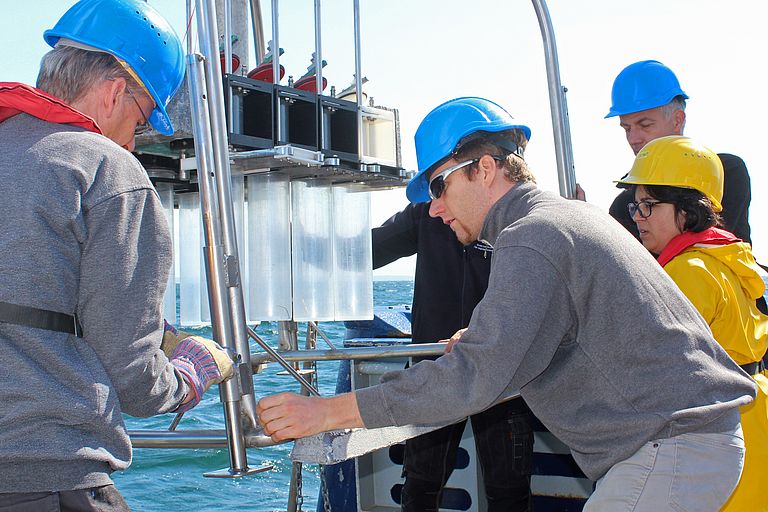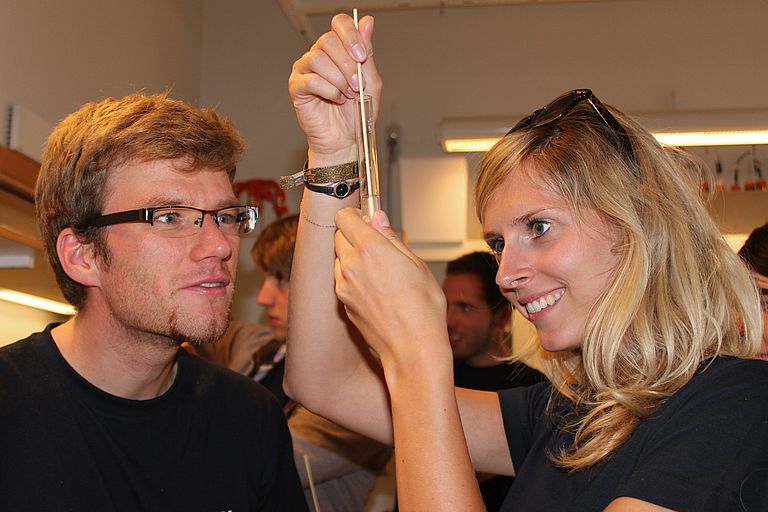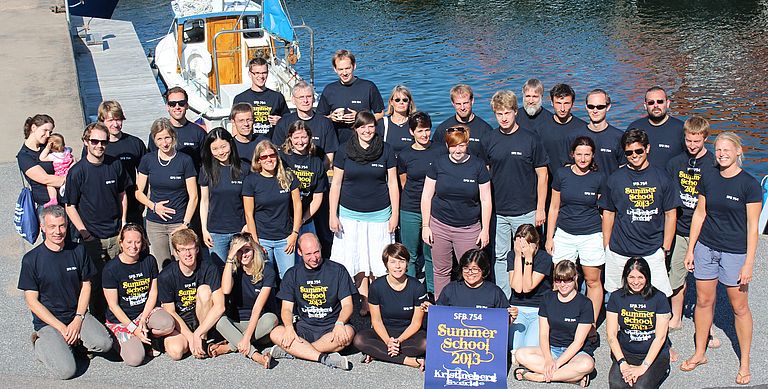Training the Next SFB Generation
SFB 754 holds two-week summer school in Kristineberg, Sweden, for doctoral and post-doctoral students
It was a stormy start: On their first day trip, the participants of the summer school of SFB 754 "Climate-Biogeochemistry Interactions in the Tropical Ocean" were treated to a rough ride in the North Sea on the research vessel SKAGERRAK. "Those who are able to learn important techniques for sampling and processing on such a day are well prepared for a career as a marine researcher," comments Dr. Christiane Schelten, coordinator of SFB 754 and the Summer School. "Despite the rough seas, all went well and our samples have provided interesting data. Since then, we’ve had perfect weather conditions."
Not only on the open seas, but also in the fjords nearby, the young scientists deployed multicorers to obtain samples from the seabed. Using the rosette sampler, they took water samples from different depths, and the plankton net was used to collect small organisms from the sea and the fjord. "These short excursions led to both, oxygen-rich and oxygen-poor areas and those zones where no oxygen is contained in the water. This offered excellent opportunities for comparison," Schelten explained.
Having gathered the first practical experiences, the students went off to the classroom and the laboratory. "The two weeks are packed with lectures and practice of the various units involved in the SFB 754 research areas," observes Prof. Dr. Andreas Oschlies, speaker of the SFB 754, who is also attending the first week of the summer school. “I am optimistic that as a result of the summer school new interdisciplinary collaborations started here will not only be maintained during the current phase but also continue into the next phase of the SFB.”
Links:
Collaborative Research Center (SFB 754) "Climate-Biogeochemistry Interactions in the Tropical Ocean"
Contact:
Maike Nicolai (Communication & Media), Phone: +49-431 600 2807, mnicolai(at)geomar.de





